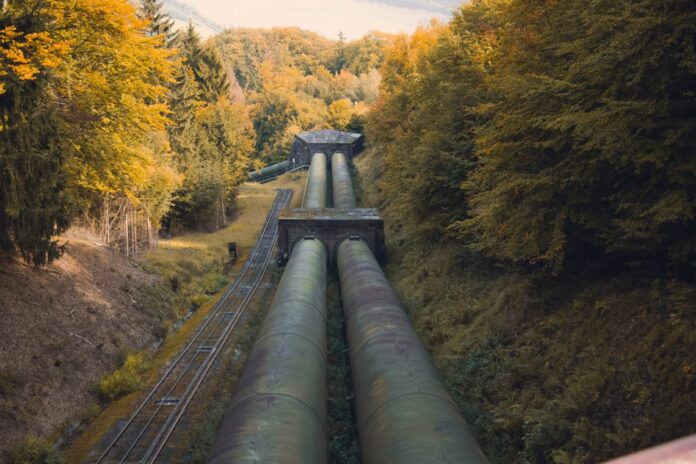Did you know that the worldwide horizontal directional drilling market size reached a value of over $8 billion in 2020? Contractors that use a Digitrak locator avoid costly accidents to contribute to that impressive total.
Are you wondering how an HDD locator like the Digitrak F5 works? Do you know the importance of an underground transmitter and sonde transmitter to HDD construction?
The following guide will explain what HDD construction is, what a Digitrak locator is, and how they work together. Read on to learn everything you need to know about this fascinating method of trenchless technology.
What Is HDD Construction?
Horizontal directional drilling is a trenchless type of construction designed to lay pipes underground without disturbing the surface. A drill is sent from one side of a bore path and received at the other side.
The whole process takes place out of sight and underground except for the initial launch. HDD is quick, accurate, and more eco-friendly than conventional pipe-laying methods that dig into the earth’s surface.
What Is a Digitrak Locator?
An HDD locating system like Digitrak is a crucial tool for conducting an accurate and effeciive HDD job. First, bore planning takes place that includes determining the terrain and necessary pitch for the job.
After bore planning, you must prevent any cross bores or other problems during the process by using an HDD locator. It essentially works as a guidance system and electronic tracking so that you dig where you mean to.
The Locator’s Transmitter
There is a transmitter located inside the drill’s head. It’s typically about 15 inches long with a diameter of 1.5 inches. The transmitter gathers and sends crucial information about data strength and signal strength during drilling.
That information creates a clock position for the drill bit to guide the direction and depth inside of the bore. Transmitters often track signal strength up to 150 feet inside of a bore.
For example, you can program the Falcon F5 transmitter to hundreds of different frequency combinations. This helps to monitor and transmit data correctly for many job types with different requirements.
How the Receiver Works
A receiver is a handheld device that receives information from the transmitter. An operator on the surface holds the device close to where they anticipate the drill head is located inside of the bore.
Display System of the Locator
The aurora display is the monitor located on the HDD drill. It relays the data it gathers from the transmitter to the drill operator. The display allows the operator to see the location and position of the drill head.
This is crucial for sticking to the job’s original bore plan. The displayed information lets the operator make necessary adjustments to the pitch, direction, and depth of the drill to ensure it follows the plan.
How the Complete System Works Together
All of the locator’s parts together create a way to keep informed about the drill head’s exact location. It also provides guidance to assist the operator in making the correct decisions to follow the proper bore path.
The screen makes up three-quarters of the receiver device. It’s broken up into four squares that form a crosshair. In the middle of the crosshair sits a top-down view of the locator.
A small box in the center of the crosshairs represents the receiver. There’s also a ball on the screen in any of the four quadrants. It indicates the direction for the drill to travel. This keeps the drill on the planned bore path.
If the ball is on the right side of the grid the receiver operator moves to the right and it moves the ball to the middle of the box. Then, the data is sent to the HDD operator who monitors progress on the aurora display.
The path is usually marked on the surface with spray paint as well. Three location points are painted to provide additional guidance for the HDD machine to follow. The three points usually correspond with the main rods.
Directing the HDD Machine
The operator eventually pulls a trigger on the receiver to set the ideal central location point. Then, they confirm the proper depth for the machine’s drill.
The data produced by the locator is extremely important for making quick decisions and adjusting the drill head’s angle and pitch on the fly. It also makes it easier for the machine to stay on track compared to old methods.
The system presents operational data in real-time. It also requires great teamwork between the receiver and drill operators to let the system do its job properly.
The HDD machine moves from one rod to the next. The starting rod becomes the rear rod once it’s passed and helps to locate the next rod. It’s important for operators to understand front and rear rod location points.
This process is repeated from rod to rod until the HDD team reaches the end of the path. It’s an incredibly detailed job and Digitrak locators are crucial for accurate completion.
Understanding Digitrak Locators
Now you know how a Digitrak locator works to help with the HDD process. It makes a very complex construction job much more simple. Though skilled operators are required, it greatly enhances their accuracy and control
Remember this guide and consider using an HDD locator on your next project to avoid costly errors. Please make sure to check out our other articles for more fascinating information and useful tips.










